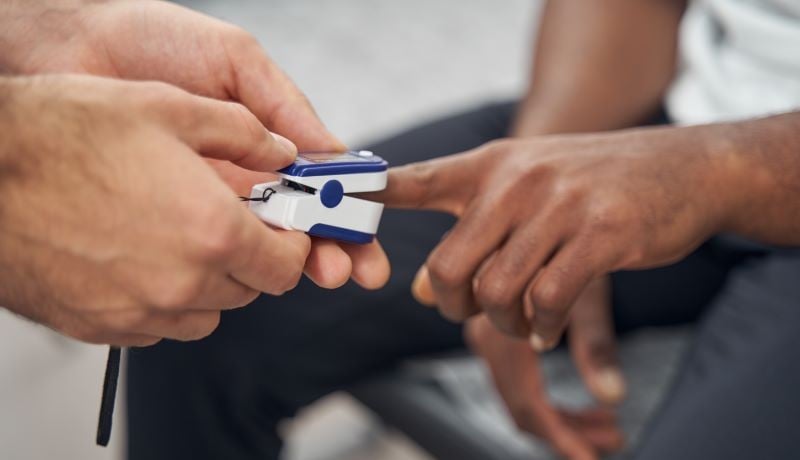Fick cardiac output may be underestimated using peripheral oxygen saturation versus arterial oxygen saturation
By Lori Solomon HealthDay Reporter
WEDNESDAY, Feb. 28, 2024 (HealthDay News) — In Black patients, Fick cardiac output (CO) may be underestimated using peripheral oxygen saturation (SpO2) versus arterial oxygen saturation (SaO2), according to a research letter published online Feb. 6 in Circulation: Cardiovascular Quality and Outcomes.
Scott W. Ketcham, M.D., from the University of Michigan in Ann Arbor, and colleagues identified 204 adult patients admitted to a single institutionâs medical or surgical cardiac intensive care units between Jan. 1, 2016, and Aug. 31, 2022, with a pulmonary artery catheter and recorded the first simultaneous (within one hour) SpO2 and SaO2, hemoglobin, and invasive hemodynamics after pulmonary artery catheter placement.
The researchers found that median SpO2 was higher than SaO2 in Black patients (99.0 versus 93.0 percent) compared with White patients (98.0 versus 97.0 percent). CO calculations were equal to 1 decimal point in 88.1 percent of White patients, while measurements were equal in only 2.2 percent of Black patients. For Fick calculations, the average absolute difference in CO between SaO2 and SpO2 was 0.93 in Black patients versus 0.05 in White patients. The average absolute difference in CO among patients with low CO was higher in Black versus White patients (0.46 versus 0.02). For Black versus White patients, the average difference in CO was significantly lower when using SpO2 versus SaO2.
“While Fick CO is only one variable that must be interpreted in the context of a patientâs entire clinical picture, an erroneous value can overestimate the severity of acute decompensated heart failure and possibly influence decisions related to the use of inotropes, afterload-reducing agents, and mechanical circulatory support,” the authors write.
Abstract/Full Text (subscription or payment may be required)
Copyright © 2024 HealthDay. All rights reserved.








